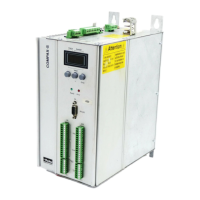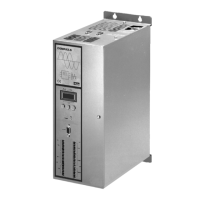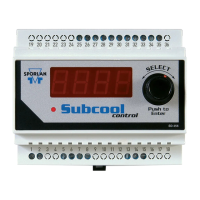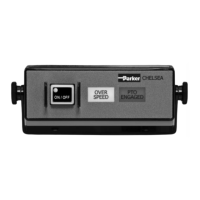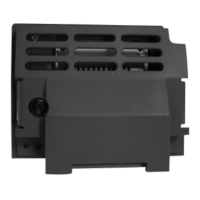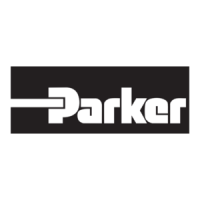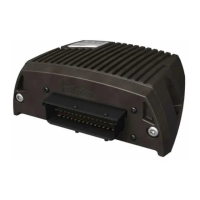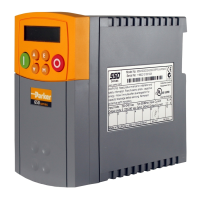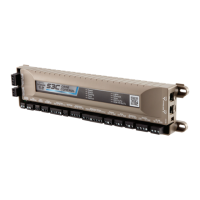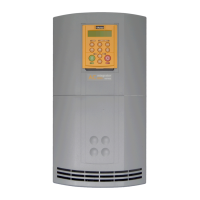Parker EME
Positioning with IEC61131-3
192-121102 N04 June 2008 19
In particular mechanical cam switching mechanisms and discontinuous shafts
maintained until today their fields of application in many areas of machine
construction. Mechanical cam switching mechanisms offer, besides complex
motion profiles, a high positioning accuracy and rigid coupling between master and
slave drive. Their drawbacks are, however, the long changeover times and the
limitation to a defined profile.
In this respect the Compax3 T40 electronic cam offers considerable time
advantages, above all when changing between small batch sizes or with a wide
range of products. The decentralization of the drive performance can reduce size,
costs and maintenance effort considerably.
The switching command between different motion profiles takes only seconds – no
fitter or wrench is required.
Large, mechanically coupled drive systems can be divided into small, independent
drives. The dynamic and stationary behavior of every drive can be individually set
and optimized.
Compax3 is able to simulate mechanical cams and cam switching mechanisms
electronically.
This helps to realize discontinuous material supply, flying knife and similar drive
applications with distributed drive performance.
The compact servo controller processes the signals of a master axis and controls a
servo drive via the desired motion profile, which is defined in the form of an
interpolation point memory.
The cam function modules (T40) and the CamDesigner make it easy to launch cam
applications in the IEC program:
Independent of your motion automation you can access Compax3 externally via
different interfaces (e.g. with the superordinate control):
via RS232 / RS485
via digital Inputs/Outputs (Interface I11)
via Profibus (Interface I20)
via CANopen (Interface I21)
The higher-level control system communicates with Compax3 via Profibus.
A number of different cyclic transfer telegrams (which can be conveniently adjusted
with the Compax3 ServoManager) can be used to adjust bus communication to the
requirements of specific applications.
In addition to the cyclic data channel, parameter access is also possible via a
DPV1 master or using the parameter channel with a DPV0 master.
The higher level control system communicates with Compax3 via CANopen.
Via various cyclic process data objects (which can be comfortably set with the
Compax3 ServoManager) the bus communication can be adapted to the
application requirements.
Apart from the cyclic process data objects, acyclic parameter access is possible via
service data objects.
The higher level control system communicates with Compax3 via DeviceNet.
Cyclic I/O messages (which can be conveniently adjusted with the Compax3
ServoManager) can be used to adjust bus communication to the requirements of
specific applications.
Besides the cyclic data, acyclic access to objects is possible via Explicit Messges.
High-performance control technology and openness for various sender systems
are fundamental requirements for a fast and high-quality automation of movement.
Interfaces with
superordinate
controllers
Profibus (I20 -
functions)
CANopen (I21 -
functions)
DeviceNet (I22
functions)
Compax3 control
technology
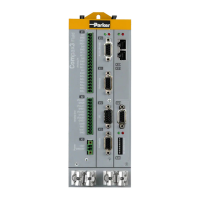
